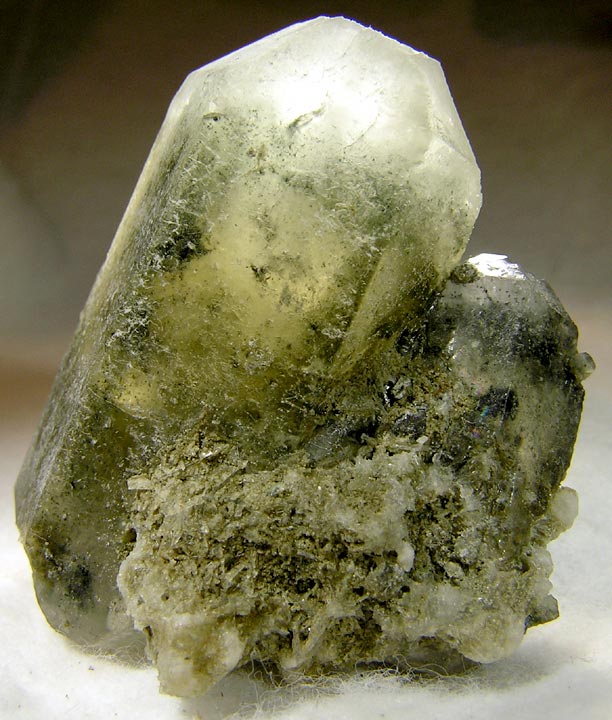|
Sulfate Carbonate
The sulfate carbonates are a compound carbonates, or mixed anion compounds that contain sulfate and carbonate ions. Sulfate carbonate minerals are in the 7.DG and 5.BF Nickel–Strunz classification, Nickel-Strunz groupings. They may be formed by crystallization from a water solution, or by melting a carbonate and sulfate together. In some structures carbonate and sulfate can substitute for each other. For example a range from 1.4 to 2.2 Na2SO4•Na2CO3 is stable as a solid solution. Silvialite can substitute about half its sulfate with carbonate and the high temperature hexagonal form of sodium sulfate (I) Na2SO4 can substitute unlimited proportions of carbonate instead of sulfate. Minerals Artificial References {{Reflist Sulfates Sulfate minerals Carbonate minerals Carbonates Mixed anion compounds ... [...More Info...] [...Related Items...] OR: [Wikipedia] [Google] [Baidu] |
Macphersonite
Macphersonite, Pb4(SO4)(CO3)2 (OH)2, is a carbonate mineral that is Polymorphism (materials science), trimorphous with leadhillite and susannite. Macphersonite is generally white, colorless, or a pale amber in color and has a white streak. It crystallizes in the orthorhombic system with a space group of Pcab. It is fairly soft mineral that has a high specific gravity. Macphersonite is named after Harry Gordon Macpherson, a keeper of minerals at the Royal Scottish Museum. It was discovered and accepted in 1984. Structure The structure of macphersonite is represented as a sequence of three layers stacked along the [001]. The first layer is a sulfate tetrahedra, the second is of lead and hydroxide, and the third is a layer composed of lead and carbonate. Stacking of the three layers can be detailed as ...BABCCBABCC... similar to leadhillite. Two C layers of lead carbonate in the BAB stacking provide a weak connection that leads to the perfect cleavage. Physical properties Th ... [...More Info...] [...Related Items...] OR: [Wikipedia] [Google] [Baidu] |
Thaumasite
Thaumasite is a calcium silicate mineral, containing Si atoms in unusual octahedral configuration, with chemical formula Ca3 Si(O H)6( C O3)( SO4)·12 H2O, also sometimes more simply written as CaSiO3·CaCO3·CaSO4·15H2O. It occurs as colorless to white prismatic hexagonal crystals, typically as acicular radiating groups. It also occurs as fibrous masses. Its Mohs hardness is 3.5 and it has a specific gravity of 1.88 to 1.90. Optically it is uniaxial negative with indices of refraction of nω = 1.507 and nε = 1.468. It occurs as a hydrothermal alteration mineral in sulfide ore deposits and geothermal alteration of basalt and tuff. It occurs with zeolites, apophyllite, analcime, calcite, gypsum and pyrite. Thaumasite can also be formed in man-made concrete structures at the detriment of calcium silicate hydrates (C-S-H, with dashes denoting the non-stoichiometry of this hydrated cement phase acting as the "glue" in hardened cement paste) during cement alteration, especially ... [...More Info...] [...Related Items...] OR: [Wikipedia] [Google] [Baidu] |
Susannite
Susannite is a lead sulfate carbonate hydroxide mineral. It has the formula Pb4SO4(CO3)2(OH)2. Susannite is the higher temperature phase of the two and forms above 80 °C when fluids oxidize the lead ore deposits. It is Polymorphism (materials science), trimorphous with leadhillite and macphersonite. Susannite crystallizes in the trigonal system. It is quite soft with a Mohs hardness of 2.5 to 3.0 and a relatively high specific gravity of 6.57. It was discovered in 1827 in the Susannah Mine, Leadhills in the county of Lanark, Scotland. In addition to the type locality (geology), type locality in Scotland, it has also been reported from various locations in Germany, the Tiger Mine in Pinal County, Arizona, from Iporanga, Brazil, and the Tsumeb mine of Namibia. References External linksMineral galleries Lead minerals Carbonate minerals Trigonal minerals Minerals in space group 148 {{Commonscat ... [...More Info...] [...Related Items...] OR: [Wikipedia] [Google] [Baidu] |
Rapidcreekite
Rapidcreekite is a rare mineral with formula Ca2(SO4)(CO3)·4H2O. The mineral is white to colorless and occurs as groupings of acicular (needle-shaped) crystals. It was discovered in 1983 in northern Yukon, Canada, and described in 1986. Rapidcreekite is structurally and compositionally similar to gypsum. Description Rapidcreekite is transparent and white to colorless. The mineral occurs as isolated clusters or pervasive crusts of radiating sprays of acicular crystals up to in length. Structure In the structure of rapidcreekite, there are two distinct calcium sites coordinated by six oxygen anions and two H2O groups arranged as a square antiprism. The sulfur site is tetrahedrally coordinated by oxygen anions and the carbon site is coordinated by a triangle of oxygen anions. The structural unit of rapidcreekite is a sheet that consists of edge-sharing CaΦ8 polyhedra (Φ, unspecified species: O or OH) cross-linked by carbonate and sulfate groups. Sheets are held together by wea ... [...More Info...] [...Related Items...] OR: [Wikipedia] [Google] [Baidu] |
Putnisite
Putnisite is a mineral composed of strontium, calcium, chromium, sulfur, carbon, oxygen and hydrogen. It was discovered on the Polar Bear Peninsula in Shire of Dundas, Western Australia in 2007 during mining activity. Following identification and recognition by the International Mineralogical Association, IMA in 2012 the mineral was named after mineralogists Andrew and Christine Putnis. The formal description was published in 2014. Putnisite has unique chemical and structural properties, and does not appear to be related to any of the existing mineralogical families. Crystals are translucent purple, but show distinct pleochroism (from pale purple to pale bluish grey, depending on the angle of observation) and leave pink streaks when rubbed on a flat surface. Putnisite occurs as small (< 0.5 mm) cube-like crystals in volcanic rock. The mineral formed during the redox, oxidation environment within komatiite to Diorite, dioritic bodies containing sulfide mine ... [...More Info...] [...Related Items...] OR: [Wikipedia] [Google] [Baidu] |



